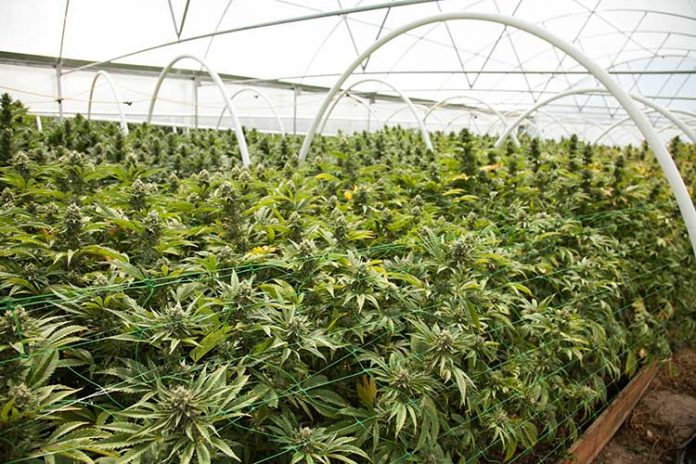Whether you’re ready for it or not, the marijuana industry is flowering before our eyes. In North America, cannabis research firm ArcView, in partnerships with BDS Analytics, has projected sales growth of 28% through 2021. If this estimate proves accurate, we could be looking at almost $25 billion in annual North American legal weed sales in just a few years.
All eyes are on Canada
Though the entire world has seemingly looked to the U.S. to lead the charge of cannabis progressivism, it’s stepped aside and allowed Canada to grab the reins. Despite 30 U.S. states having legalized marijuana in some capacity, the federal government and Attorney General Jeff Sessions have been unwavering on pot’s Schedule I classification — i.e., wholly illegal, prone to abuse, and having no recognized medical benefits.
Meanwhile, Canada looks to be in the homestretch toward recreational legalization. Should C-45, which is better known as the Cannabis Act, be signed into law in June, adults over the age of 18 could legally purchase cannabis by as early as August or September. In doing so, Canada would become the first developed country, and second overall behind Uruguay, to legalize recreational cannabis. It’d also open the door to more than $5 billion in estimated annual sales.
As you might imagine, Canadian pot stocks are scrambling to expand their production capacity as quickly as their balance sheets will allow. The thinking here is that growers with the highest annual production will be the likeliest to secure long-term supply agreements, as well as forge brand-name relationships with consumers, once the proverbial green flag waves of legal weed.
However, a successful cannabis stock is going to need more than just a lot of annual production to merit a hefty valuation. Management teams are going to need to think smart in order to outperform an increasingly crowded cannabis field. One such pot stock that’s working smarter, not harder, than its peers is Ontario-based MedReleaf.
A smart approach to expansion
On paper, MedReleaf looks like a solid player, but not one that’ll challenge the production kingpins: Canopy Growth Corp., Aurora Cannabis, and Aphria, which could respectively produce around 300,000 kilograms of dried cannabis, 283,000 kilograms, and 230,000 kilograms a year. By comparison, MedReleaf is looking at a fully funded 140,000 kilograms of annual production. But MedReleaf has some tricks up its sleeve.
On Feb. 26, the company announced that it had acquired 164 acres of property in a cash-and-stock deal. While acquisitions have become a regular occurrence in the pot industry, MedReleaf’s was somewhat unique. Of the 164 acres it purchased, 69 acres contained a pre-existing facility known as Exeter that the company plans to retrofit to grow indoor cannabis. Rather than building a greenhouse from the ground up, the company acquired a pre-existing structure that’ll save time and money, allowing it to crank out its first harvest from Exeter by the end of this year. Not to mention, it also has 95 acres of adjacent land that it could use in the future to expand the Exeter facility. This acquisition quadrupled the company’s projected annual yield from 35,000 kilograms to 140,000 kilograms.
Additionally, MedReleaf has pushed away from relying on highly commoditized dried cannabis to drive sales. It’s now venturing into premium marijuana strains and leaning considerably more on extracts as a percentage of total sales.
This past week, the company introduced a new line of premium cannabis products known as AltaVie. Sporting a higher per-gram price, AltaVie will go after a niche consumer who’s likely to be unaffected by fluctuations in the economy.
In an even broader sense, MedReleaf reported a nearly 700% year-over-year increase in extract sales in its fiscal third quarter. What had totaled less than 3% of sales in Q3 2016 worked out to 21% of total sales as of Q3 2017. This is relevant because extracts boast a considerably higher price point and margin relative to dried cannabis. In other words, if two cannabis companies generate the same amount of revenue, the one with the higher percentage of extract sales is likely to produce more in profits since it’ll have the better margins. MedReleaf’s focus on niche dried cannabis consumers and extracts is a genius move on the part of its management team.
The $64,000 question: Will there be a cannabis glut?
On paper, this probably sounds fantastic. In fact, MedReleaf is one of just two cannabis companies to have reported a full-year profit in each of the past two years (Aphria being the other). But there’s still a major variable that remains unaccounted for in the cannabis space: supply and demand.
The real issue is that no developed country has ever legalized recreational weed before, so the estimates for total demand and production vary widely. Most projections suggest that domestic demand could total around 800,000 kilograms a year in Canada. Yet, production could wind up nearing 2 million kilograms a year by 2020. This could leave the domestic Canadian market with a surplus of around, or over, 1 million kilograms of cannabis. Some of this extra pot could find a home via exports to countries where medical marijuana is legal, but it remains to be seen if all of this projected surplus can be offloaded via exports. Should oversupply hit the Canadian market, per-gram prices, and therefore margins, could tumble.
If there is a bright side to this grim scenario, it’s that higher-priced cannabis strains and extracts will likely be immune to the projected glut, mainly because they focus on a niche consumer. This could help protect MedReleaf’s higher-margin products from pricing pressure.
Still, with so many unknown variables, investors should continue to monitor MedReleaf from the safety of the sidelines.














